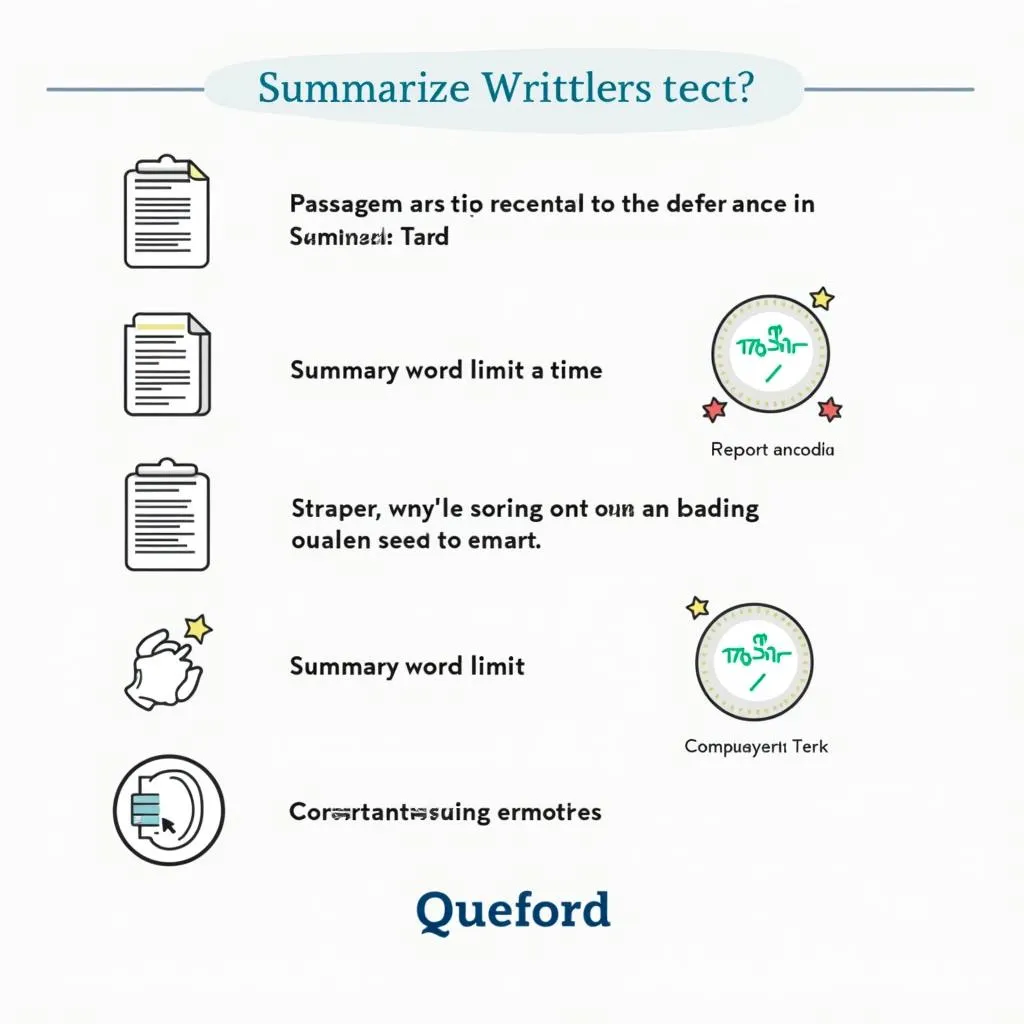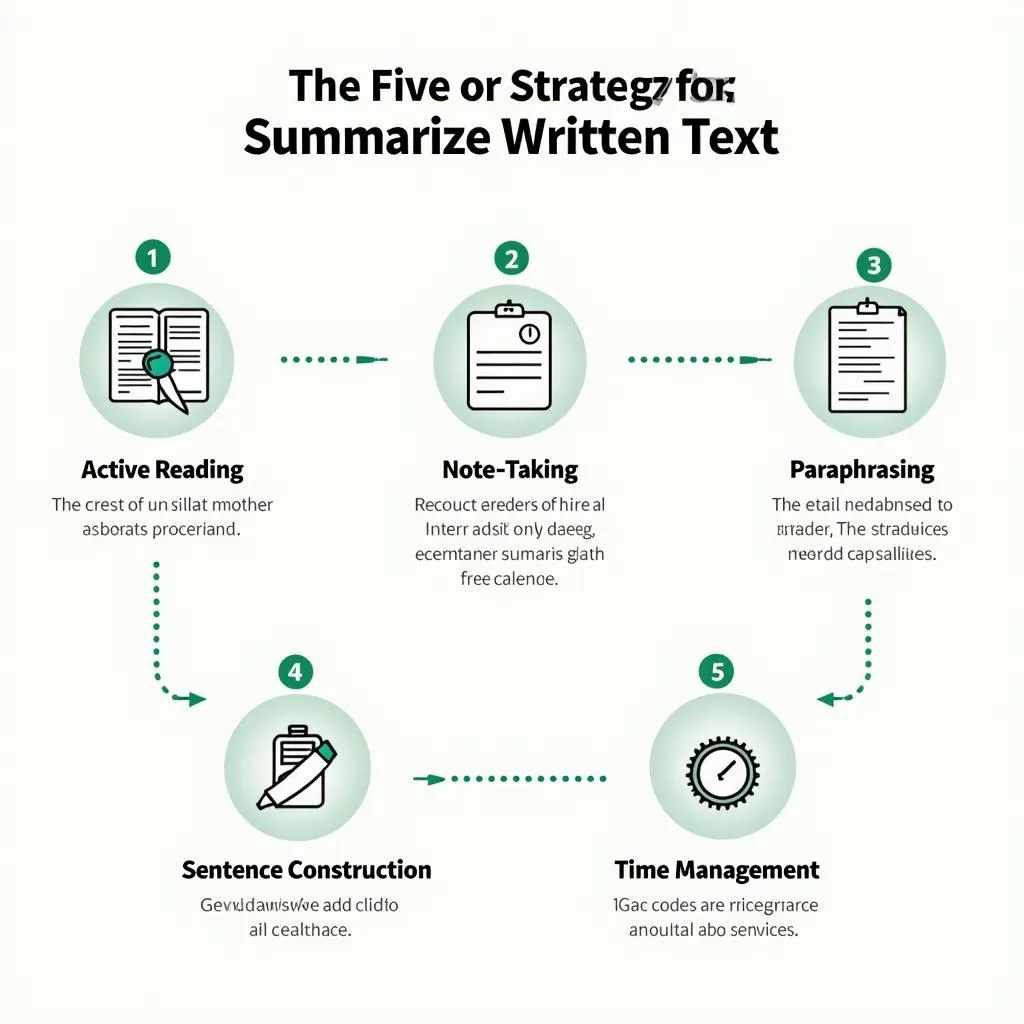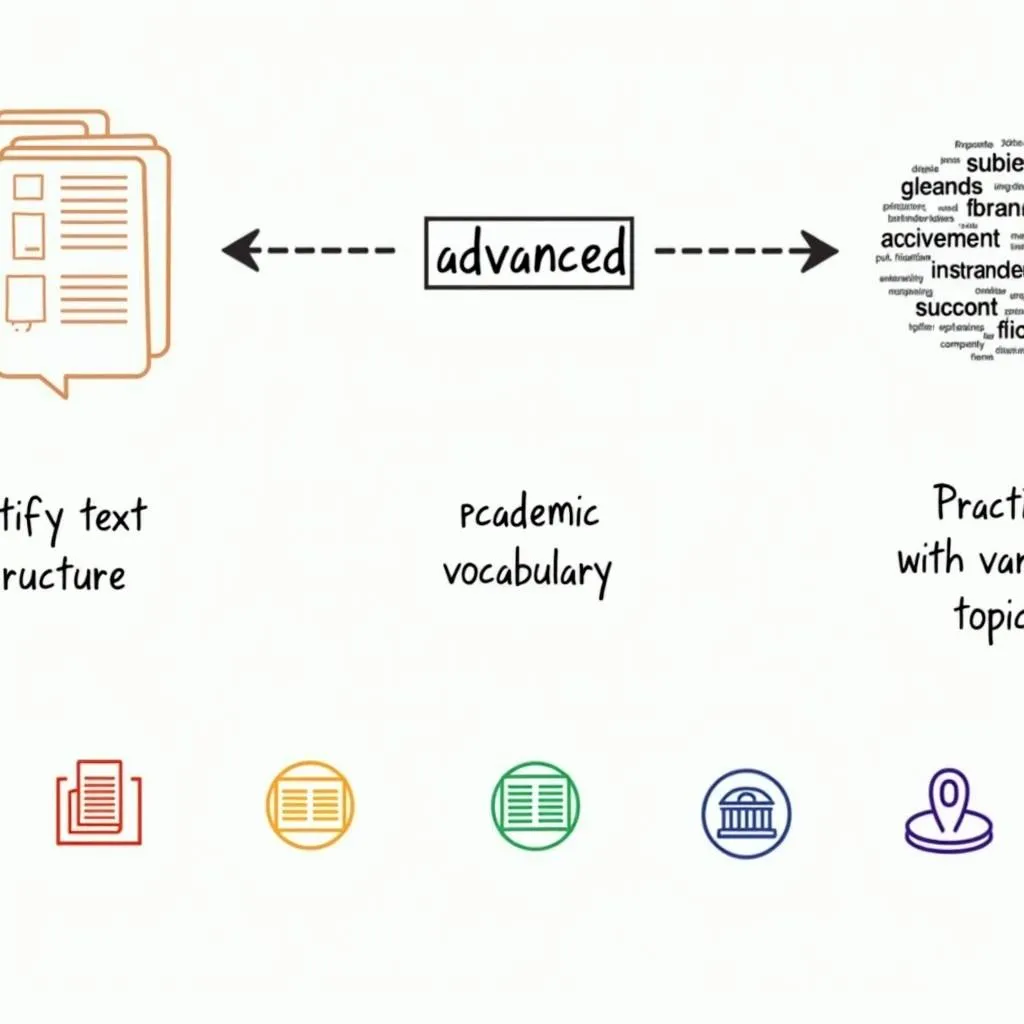Mastering the Summarize Written Text task is crucial for success in the PTE Academic exam. This challenging section requires candidates to condense a lengthy passage into a single, coherent sentence within just 10 minutes. In this comprehensive guide, we’ll explore effective techniques to help you excel in this task and boost your overall PTE score.
Understanding the Summarize Written Text Task
Before diving into practice strategies, it’s essential to grasp the task requirements and scoring criteria.
Task Overview
- Read a passage of up to 300 words
- Summarize the main points in one sentence (30-50 words)
- Time limit: 10 minutes
Scoring Criteria
- Content: Accurately capturing the main ideas
- Form: Adhering to word limit and grammar rules
- Grammar: Using correct sentence structure and language
- Vocabulary: Employing appropriate word choice and academic language
 PTE Summarize Written Text Task Overview
PTE Summarize Written Text Task Overview
Effective Strategies for Practicing Summarize Written Text
To improve your performance in this task, incorporate these strategies into your PTE preparation time management plan:
-
Develop Active Reading Skills
- Skim the passage quickly to get an overview
- Identify the main topic and supporting ideas
- Look for key words and phrases that convey the central message
-
Practice Note-Taking Techniques
- Jot down key points as you read
- Use abbreviations and symbols for efficiency
- Organize notes in a logical structure (e.g., mind maps or outlines)
-
Master Paraphrasing
- Rewrite key ideas in your own words
- Use synonyms and alternative sentence structures
- Avoid copying directly from the original text
-
Focus on Sentence Construction
- Experiment with different sentence types (e.g., complex, compound)
- Use transitional phrases to connect ideas smoothly
- Ensure your sentence flows logically and coherently
-
Time Management
- Allocate 3-4 minutes for reading and note-taking
- Spend 5-6 minutes drafting and refining your summary
- Reserve 1-2 minutes for final review and editing
 Effective Strategies for PTE Summarize Written Text
Effective Strategies for PTE Summarize Written Text
Common Pitfalls to Avoid
When practicing Summarize Written Text, be aware of these common mistakes:
- Including minor details instead of focusing on main ideas
- Exceeding the word limit or writing incomplete sentences
- Using personal opinions or external knowledge
- Neglecting proper grammar and punctuation
- Failing to connect ideas coherently
Dr. Sarah Thompson, a renowned PTE expert, advises: “The key to excelling in Summarize Written Text is to strike a balance between conciseness and comprehensiveness. Focus on capturing the essence of the passage without getting lost in the details.”
Advanced Techniques for Summarizing
To further enhance your summarizing skills, consider these advanced techniques:
Identifying Text Structure
Recognize common text structures such as cause-effect, problem-solution, or compare-contrast. This will help you quickly identify the main ideas and their relationships.
Using Academic Vocabulary
Incorporate appropriate academic words and phrases into your summary. This not only demonstrates your language proficiency but also helps you express complex ideas concisely.
Practicing with Varied Topics
Expose yourself to a wide range of topics, from science and technology to social issues and humanities. This will improve your ability to understand and summarize diverse content.
 Advanced Techniques for PTE Summarize Written Text
Advanced Techniques for PTE Summarize Written Text
Integrating Summarize Written Text Practice into Your PTE Preparation
To maximize your improvement, integrate Summarize Written Text practice into your overall PTE preparation strategy:
- Regular Practice Sessions: Dedicate specific time slots for this task in your study schedule.
- Timed Exercises: Simulate exam conditions by setting a 10-minute timer for each practice attempt.
- Self-Assessment: Review your summaries critically, comparing them to model answers or seeking feedback from tutors.
- Skill Transfer: Apply summarizing skills to other PTE tasks, such as essay writing and speaking sections.
Remember, mastering Summarize Written Text is not just about acing this particular task; it’s about developing a valuable skill that will benefit you across various sections of the PTE exam and in your academic journey.
As PTE coach Emily Davis notes, “Consistent practice in summarizing written text sharpens your analytical thinking and improves your ability to process information quickly—skills that are invaluable throughout the PTE exam and beyond.”
Conclusion
Practicing Summarize Written Text effectively is crucial for PTE success. By implementing these strategies, avoiding common pitfalls, and consistently refining your skills, you’ll be well-equipped to tackle this challenging task with confidence. Remember to integrate these techniques into your broader best strategies for PTE writing section for comprehensive exam preparation. With dedication and the right approach, you’ll see significant improvement in your ability to summarize written text accurately and efficiently.
FAQ
-
How many words should my summary be in the PTE Summarize Written Text task?
Your summary should be between 30 and 50 words long. Aim for clarity and conciseness while staying within this range. -
Can I use direct quotes from the original text in my summary?
It’s best to avoid direct quotes. Instead, paraphrase the main ideas in your own words to demonstrate your understanding and language skills. -
What if I can’t understand all the vocabulary in the passage?
Focus on the words and phrases you do understand to grasp the main ideas. Context clues can help you infer the meaning of unfamiliar terms. -
Is it necessary to include every main point from the original text in my summary?
Not always. Prioritize the most important ideas that capture the essence of the passage. Sometimes, minor details can be omitted for brevity. -
How can I improve my speed in summarizing written text?
Regular practice, developing efficient note-taking skills, and improving your reading speed will all contribute to faster summarizing abilities. -
Should I use complex grammatical structures in my summary to impress the examiners?
While it’s good to demonstrate your language skills, clarity and accuracy are more important. Use complex structures only if you’re confident in their correctness. -
What’s the best way to start my summary sentence?
Begin with a clear subject that introduces the main topic of the passage. Avoid starting with phrases like “The passage talks about…” or “This text discusses…”.